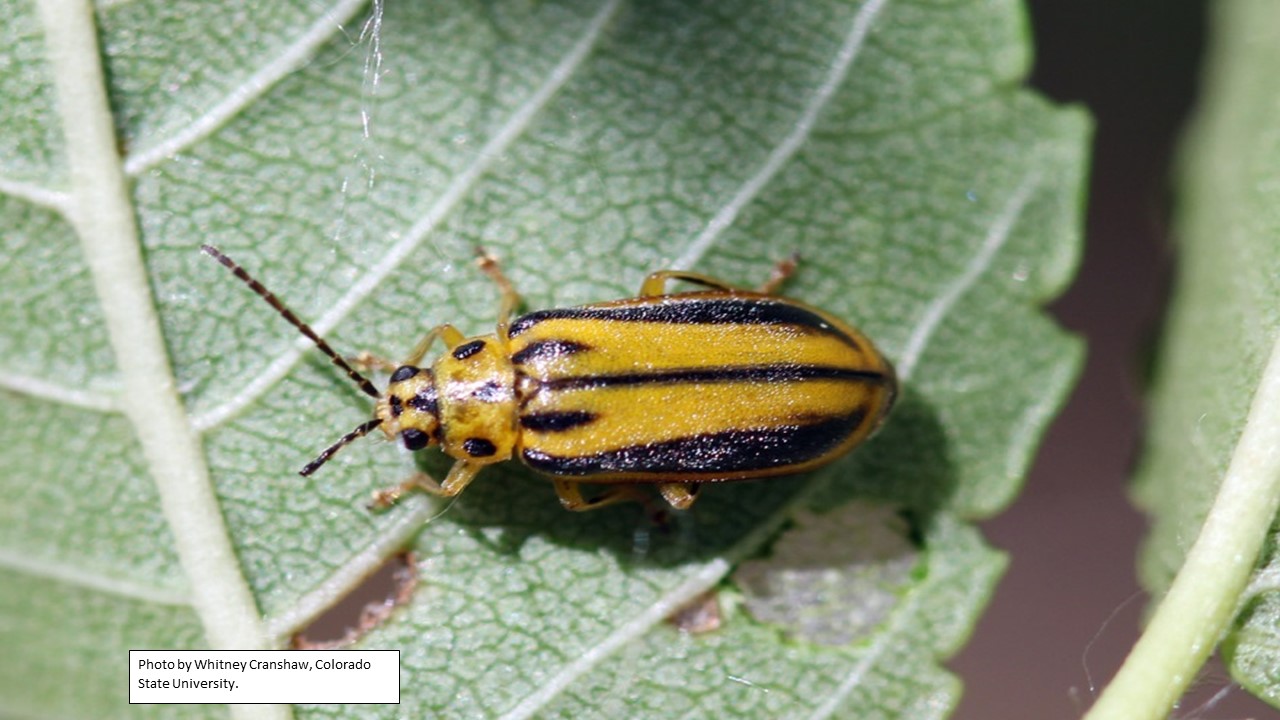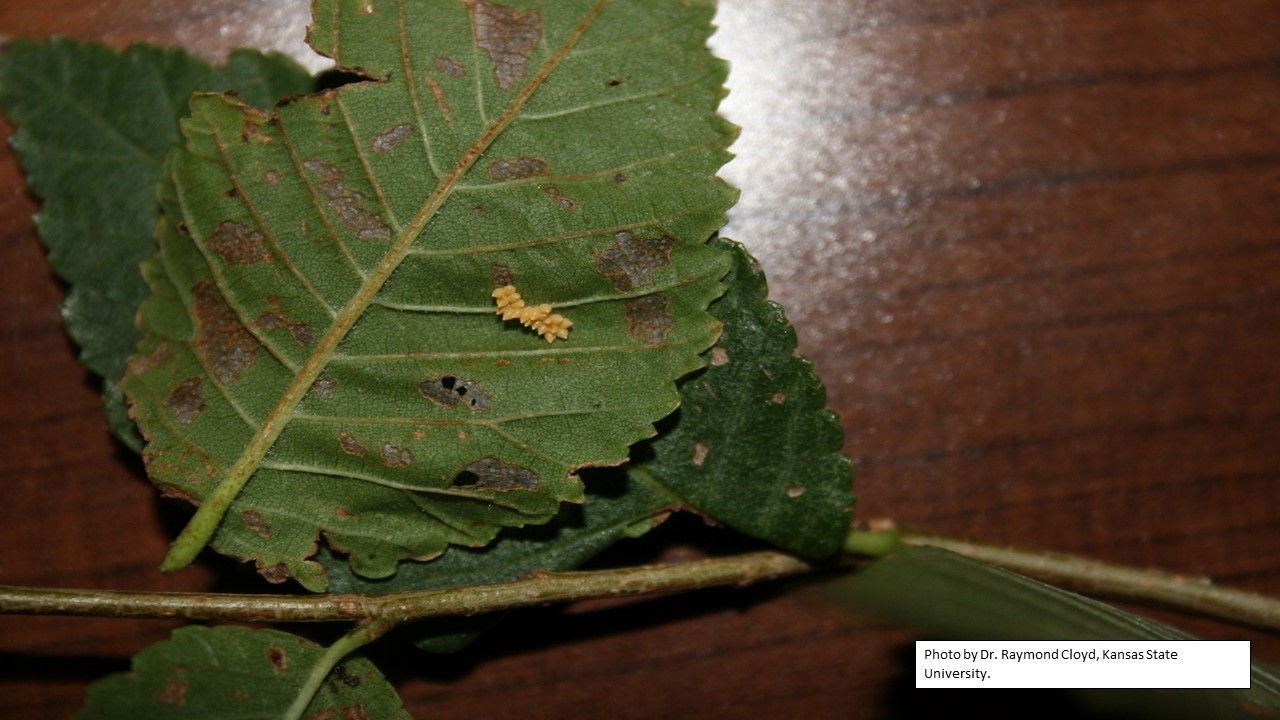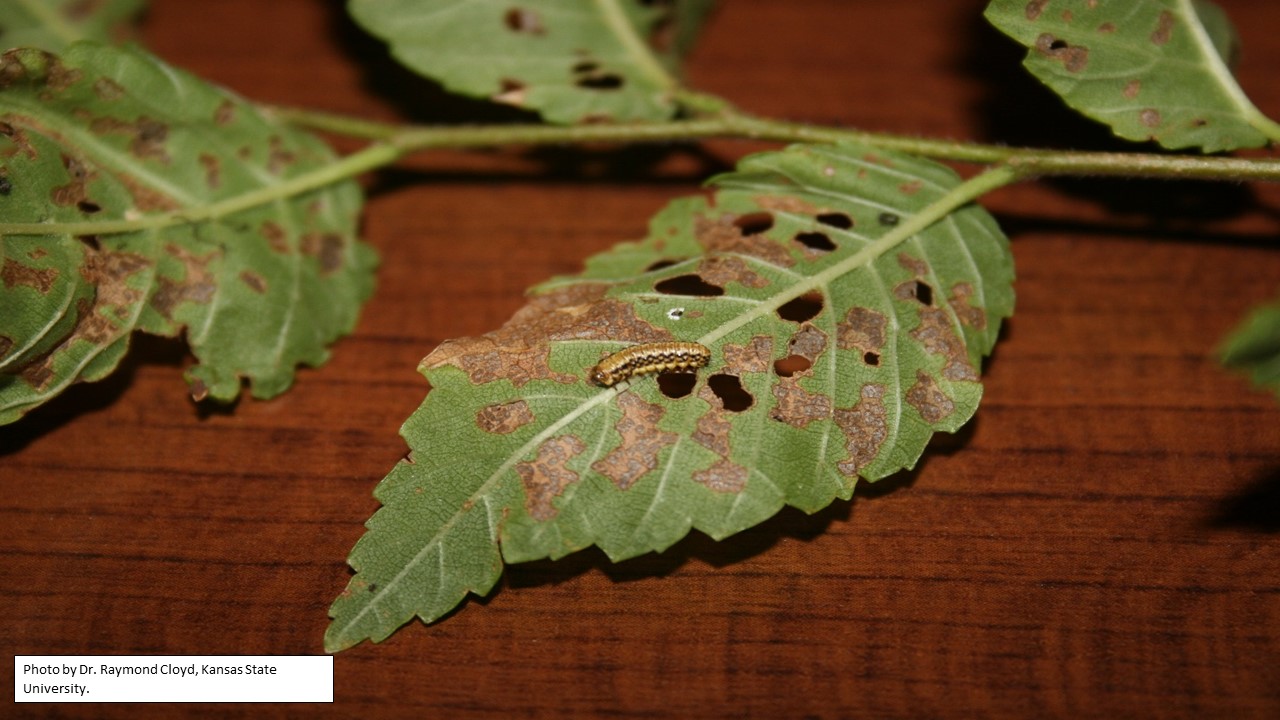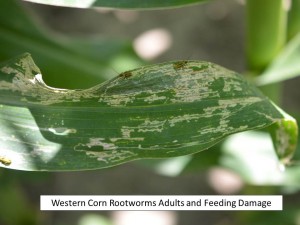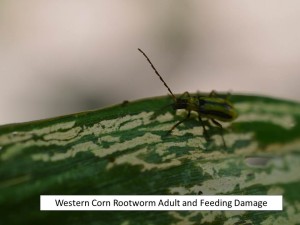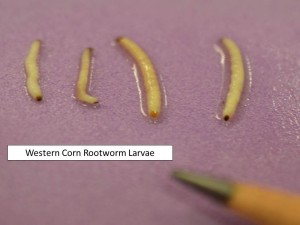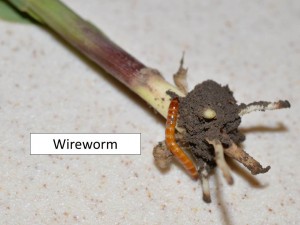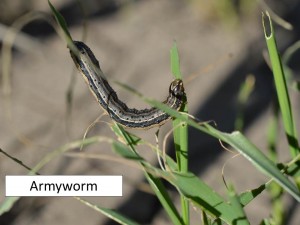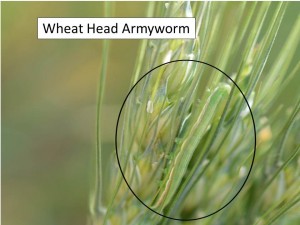–by Dr. Raymond Cloyd
Now is the time to be on the lookout for the elm leaf beetle, Pyrrhalta luteola, which may feed on all elms; however, elm leaf beetle prefers Siberian and American elm, with Chinese elm being less susceptible. Adults are about 1/4-inch long, slender, and yellow-green in color, with black stripes extending down the entire length of the abdomen. Furthermore, there are distinct black spots on the head and thorax. Adults appear in spring and eat small holes in leaves. Females lay yellow-orange eggs in clusters on leaf undersides. A single female can lay between 600 to 800 eggs during her lifetime. Eggs hatch in 5 to 6 days into green larvae that look-like grubs. Larvae are approximately 3/8 to 1/2 inches in length. Initially, they are black, and then turn yellow in color with two black lateral stripes along the sides of the body. Larval feeding causes leaves to appear skeletonized because they scrape the leaf tissue from the upper surface with their chewing mouthparts; leaving the veins intact. The tissue between the veins eventually turns brown. Larvae, which are the major source of damage to plants, feed for about 3 weeks.
The last larval instar crawls down tree trunks, where they pupate at the base of trees in and on the ground. They may also pupate in the cracks and crevices of the trunk or in large branches. In about two-weeks, adults emerge and start feeding on plant leaves. They normally feed on the same trees that larvae fed upon. Adults may be a nuisance pest in late summer and early fall when they migrate from trees and enter homes to overwinter. They will also overwinter in protected places outdoors. It is interesting to note that both adults and larvae may be present simultaneously. There are two generations per year in Kansas with the second generation causing the most damage.
Insecticides should be applied at the first appearance of both adults and larvae, and routinely throughout the summer and early fall in order to protect elm trees. This is especially the case if extensive feeding by elm leaf beetles will impact the aesthetic appearance of elm trees. When using contact insecticides, it is important to obtain thorough coverage of both the underside and upper side of plant leaves. However, avoid applying acephate (Orthene) on American elms as this may cause plant injury. If elm leaf beetle populations are minimal, then insecticide applications may not be warranted. Always read the insecticide label prior to making any applications.
